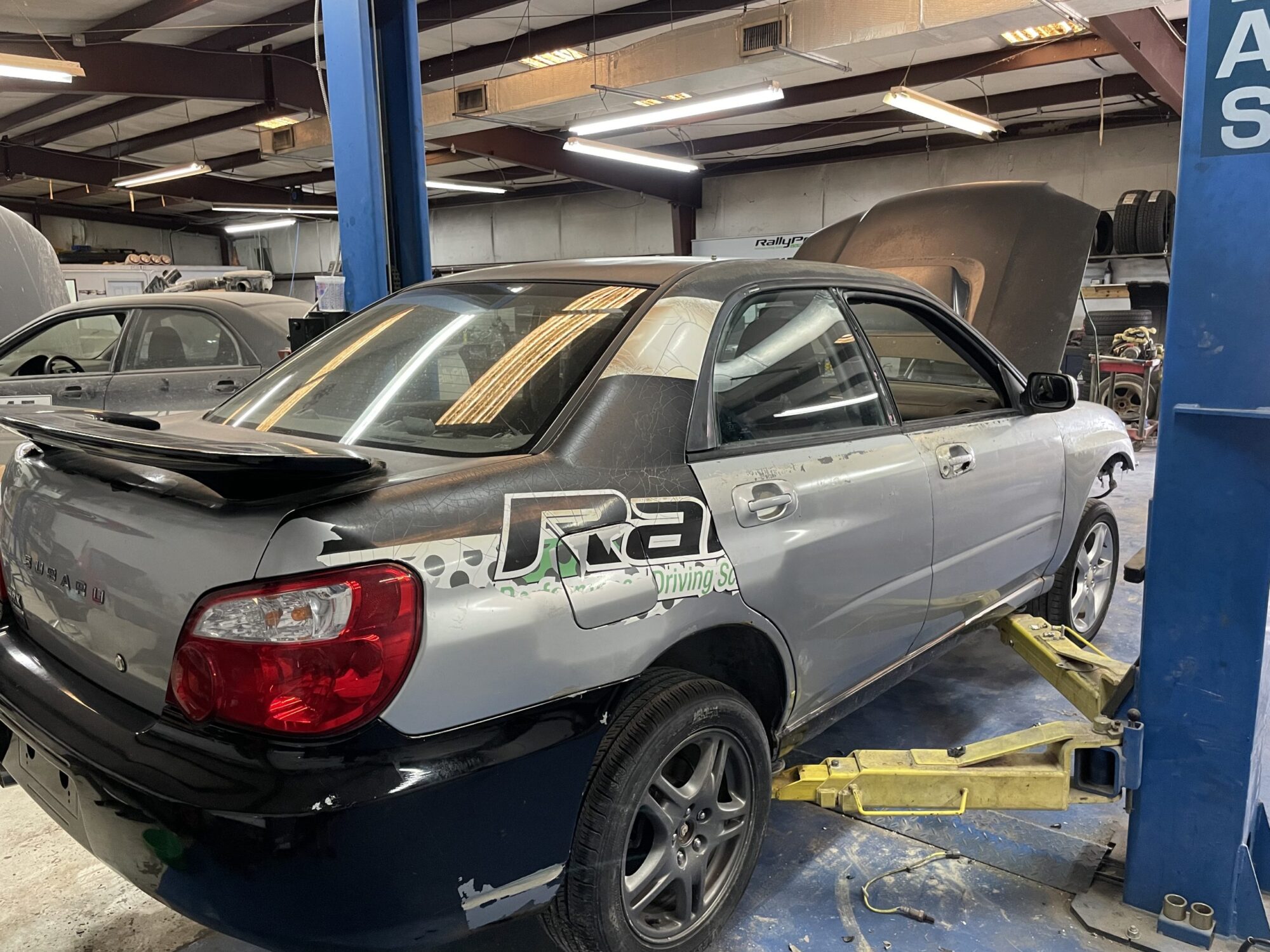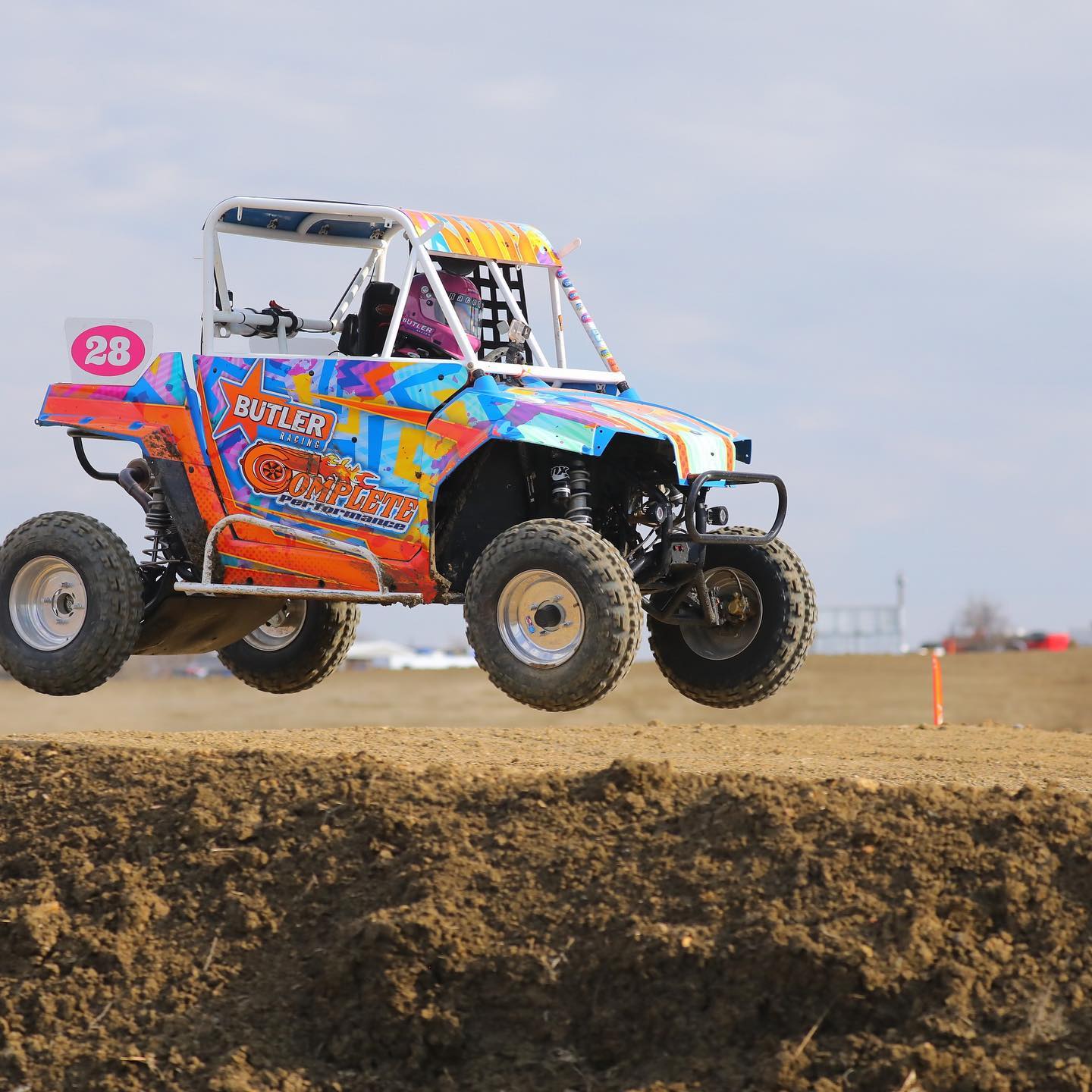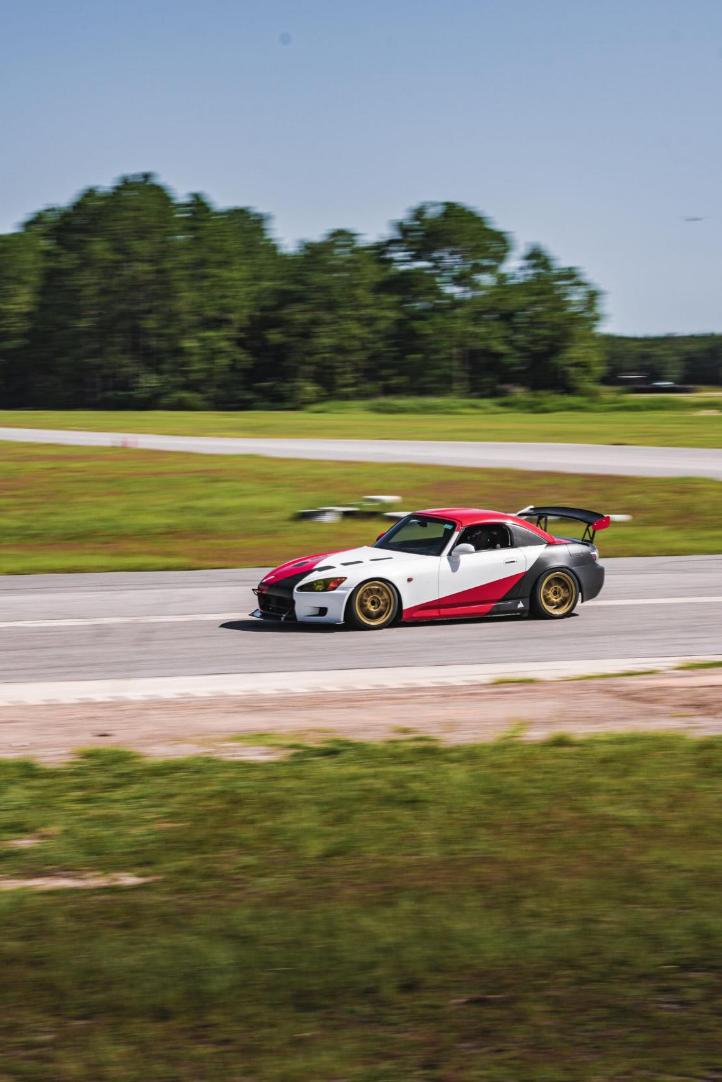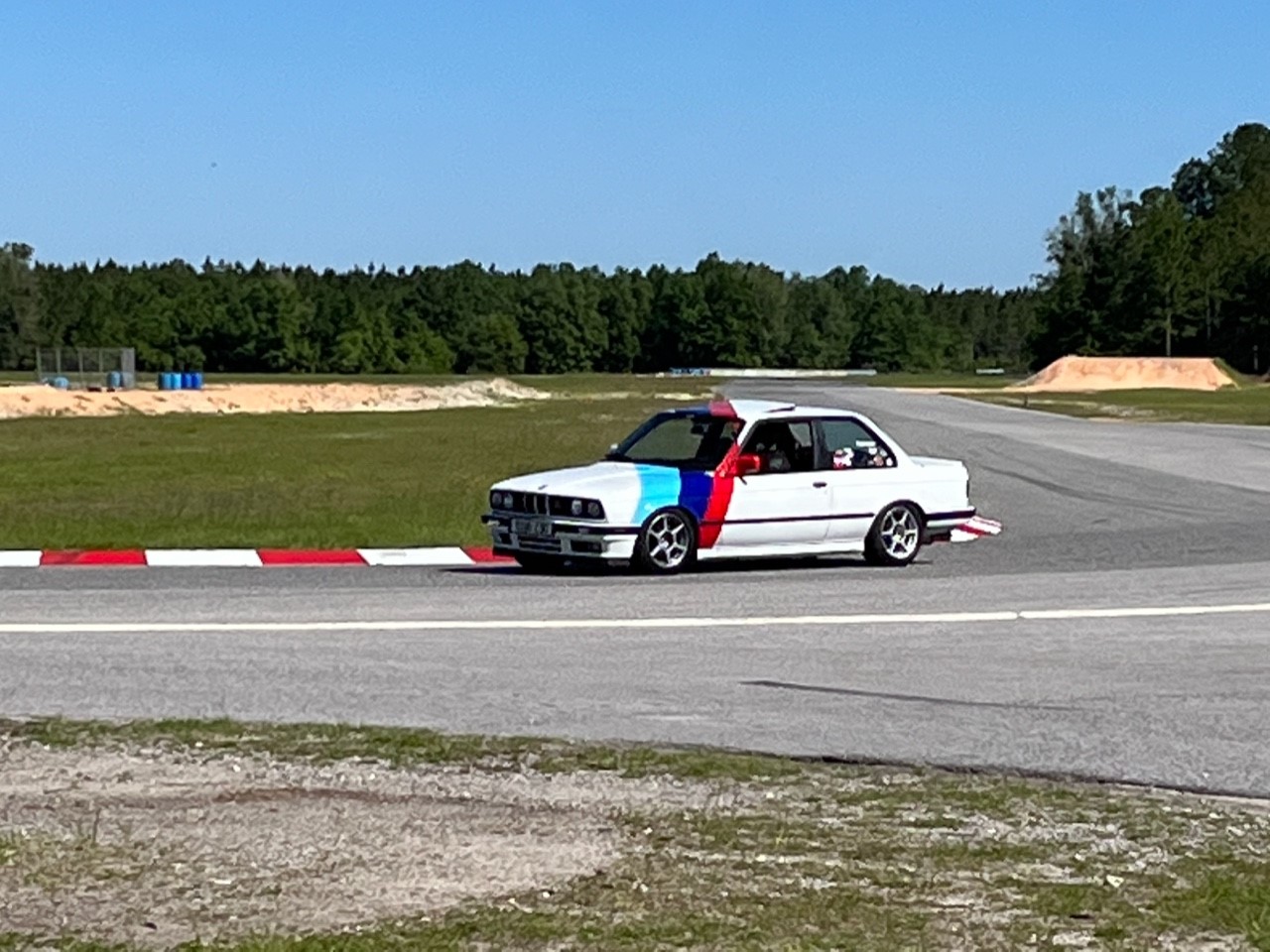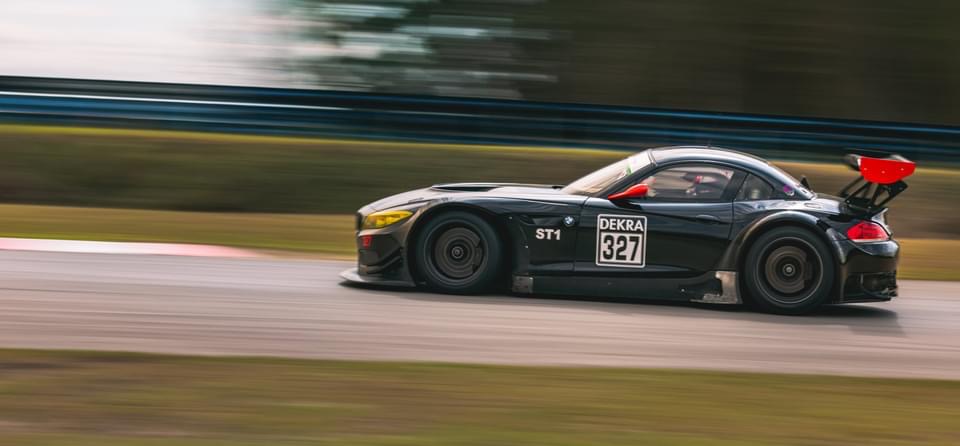You’ve Made it to the Track for your First Track Day. Now What?
Part 2 in a 2 part series. See part 1 here
Now that you’ve studied up, registered for your event, and arrived, the fun begins! Here’s what to expect.
What To Expect For Your First Track Day
Check in and tech. The FIRM has two gates: one with a call box and a second one that has a friendly employee to help you check in. You and every person coming onto the premises will need to sign a waiver (this is America, after all) and get a wristband demonstrating that you did so. Park your car and/or tow rig and start unpacking. You’ll want to get your car totally emptied out. Remove floor mats, loose change, slurpee cups, french fries, pets, that huge stack of parking tickets in the glove box, your chapstick collection, Justin Bieber CDs, etc. All of these things become hazardous missiles at speed and will cause you to fail your tech inspection. There are several large barrels located on site for disposal of your trash, so when disposing of your signed copy of Purpose, please don’t litter. Review, fill out, and sign your technical inspection form to present along with your car to The FIRM’s staff at tech inspection.
Pay attention to the driver’s meeting. Your friendly track staff will explain all the crucial details: flags and their meanings, run groups, timing of sessions, passing rules and any important points to note about track conditions. Of particular importance are the flags. Green means the track is open, yellow means there is a caution on track such as dirt or other debris, or a disabled vehicle. Red means come to a controlled stop, preferably near a corner worker station. Something bad has happened and rescue vehicles need to get out on track. The black flag means there is a problem with either your driving or your car, and you need to relax your pace and come into the pit to check in with the track staff. A blue flag with a yellow diagonal is a signal for you to check your rear view mirrors and let a faster car pass at the next passing zone.
All this knowledge and we haven’t even talked about the actual driving yet! For your first time, you’ll have an experienced in-car instructor with you to help you with where to look, what path or “line” to take around the track, where to brake, where to turn, and so on. The following guidelines apply to all on-track driving:
Get comfortable. Your driving position is important. You’ll want to be close enough to the steering wheel that your elbows remain bent, and that you are able to comfortably use the pedals with the ball of your foot, not your toes. Sit fairly upright and not leaned back. Keep both hands on the wheel unless it’s absolutely necessary to take one off, such as when shifting gears in a manual-transmission car. Even then, only let go long enough to shift, and get the hand back on. This isn’t the Fast and the Furious, so don’t rest your right hand on the gearshift. I use a 9 o’clock and 3 o’clock hand position, but many use a 10 and 2. I don’t recommend putting both hands up at the top of the steering wheel in an 11 and 1; for some reason people want to do this.
It’s not a race; drive at your own pace. While you should be aware of other cars on track, drivers behind you will forgive you for driving at whatever pace you feel comfortable with. What no one will forgive you for is driving beyond your abilities and wrecking.
Look ahead. The car goes where your eyes go. Most new drivers focus too close off the nose of the car. Concentrate on looking far head into and through the next turn. This is one of the hardest, yet most rewarding skills to learn for a new driver, so practice early. It is unsettling to get used to not checking right next to the car as you drive, so ease into it. Think of looking ahead as feeding your brain; the further you look ahead, the more information your brain has to make decisions, and the sooner it gets it. You’ll be able to pilot the car smoother, safer, and faster just by providing your subconscious with all the extra information.
Be smooth. At higher speeds, every input into the car- turning, braking, and accelerating- has a larger effect than it would at regular speeds. Be deliberate, but be smooth. Resist the urge to death grip the steering wheel with white knuckles. When you apply the brakes, lean into them hard, but not so hard as to activate Anti-Lock Braking or “ABS”. You’ll know ABS activates by the pulsation you feel through the brake pedal. Roll the throttle on, but don’t stomp it.
Listen to your car. Listen to your tires especially. Tires, street tires in particular, “talk” when driven near, at, and beyond their limits of grip. If your tires are screaming in agony all the way around the track, not only are you going slower than you could be going, but you’re rapidly wearing the tires out with excess heat. As you increase the turning angle of the steering wheel, you’ll first notice a bit of low groan or growl, followed by louder, higher pitched screeching, and then ultimately an all-out squeal. Do your best to get around the track with at most just a bit of that low growling noise, and you’ll be rewarded with smooth, fast laps and longer tire life.
Be courteous. You’ll need to pass and be passed by other cars on track. It doesn’t mean anyone is winning or losing. Each track and run group has passing rules about where cars are allowed to pass and where they aren’t. At The FIRM, the main straight is the safest place to pass. The slower car should remain “on line” where they would normally drive (at the main straight, this is on the right) and put a pointing finger out the window. In this example, you would point the faster car to your left, and stay to the right, allowing the passing car to go by on your left. Don’t slam on the brakes, but do breathe off the throttle a bit to allow them to go by. If you find yourself needing to let a car go by on your right side, then point up and over the roof of the car to your right.
Don’t panic if you have a “moment.” Eventually you may find that you have driven beyond what the car can take and put a wheel, or two, or four off of the pavement. First of all, for the most part The FIRM doesn’t have any hard objects to run into, and a trip “mowing the lawn” off of the track surface will likely not harm your car. If you do find yourself in extremis, get on the brakes as soon as you can and, if your car has a clutch pedal, press and hold it in as well. Try to keep the car mostly straight as you exit the track into the grass, to prevent the unlikely event of a roll-over. If you get stuck in the mud, the track staff will come extract you. Let’s hope you put that tow hook in! Most importantly, DO NOT get out of your car on track unless it is on fire! You’re much safer inside the vehicle than out of it. After putting two or more wheels off of the track, come into the pits ant the track staff will help you check your car for damage.
Know when to cool down and pit in. Your track session should not exceed twenty minutes, even though at The FIRM you’ll likely be able to come in and then immediately go back out on track. Street cars, even with reliability modifications, need time to cool off after all the hard driving. If you see the corner worker at the pit wall display a white flag, that is your signal to perform a cool-down lap. Use brakes as little as possible and try to coast around the track to allow your car, and especially your brakes, to cool. If possible, pay attention to time and cool down before the white flag is thrown. Once you see the checkered flag, it’s time to come in. If it gets thrown right as you approach the pit, don’t feel like you have to dive on the brakes and come screeching into the pit, but you do want to come in at your first safe opportunity. As you approach pit in, stay track left and put a closed fist out of the window as a signal that you are coming in. As you enter the pits, slow down to walking speed, but also keep an eye on your rear view mirror in case a car is coming in fast behind you with failed brakes. I recommend continuing on outside the gate onto the gravel road and doing a u-turn before parking your car, to allow even more time for brake cool down. When you park, park somewhere level and try not to engage the brakes. Use wheel chocks or leave the car in gear, but do not set the parking brake. Allowing hot brake pads or parking brake shoes to touch the rotor while the car is stopped will put pad deposits on to the rotors and cause the brakes to shake or judder.
Hydrate. Driving is much more physically demanding than most realize, especially in the Florida heat. You’ll need to run with windows down (for pointing by and so rescue workers can access you should there be an incident), and using the air-conditioner is frowned upon as it drops condensation water on track. To stay in mental and physical shape, drink lots of water. Bring a cooler with at least two gallons of water per person during the summer. Find some shade.
Know when to quit. If your car seems to be doing something abnormal or you start to feel mentally cloudy, take a break, or even pack it up and call it a day. One of the great benefits of track days at The FIRM is that there is more seat time available than most drivers can handle in a single day. Don’t feel like you have to drive until the track closes; most people pack up early.
The FIRM is unique in its relaxed, accommodating atmosphere. It is especially suited for new track drivers due to all corners having good vision, and the track having plenty of runoff should a driver find themselves performing an unplanned exit of the pavement, as well as the average amount of other cars on track being quite low. Once you get a taste you’ll find yourself becoming a regular; I know I did.
Have you checked out the 1st post in the series to get ready for your first track day? Read Part 1: Ready for a Track Day?



